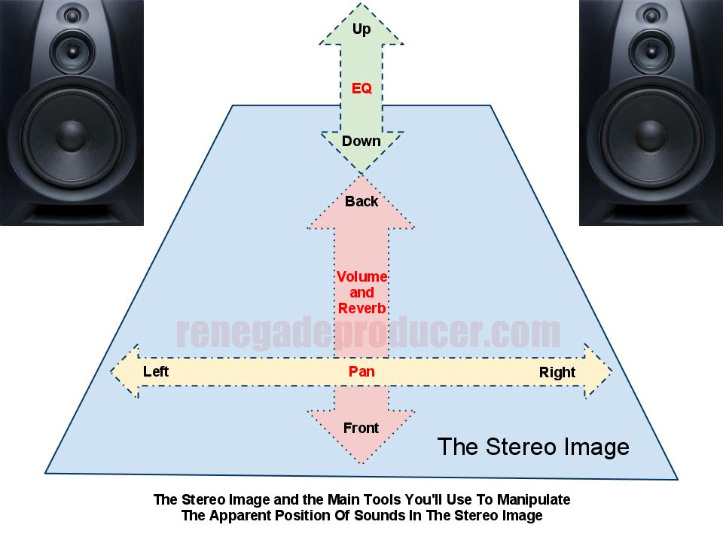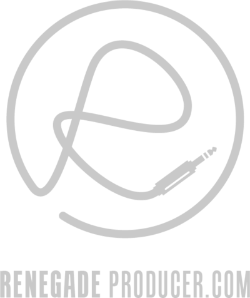25-step music production process checklist and video workshop >>>
How To Position Sounds In The Stereo Image
When Mixing Your Own Music...
Part of mixing your own music is about how you position various sounds in the stereo image. Below, you'll discover the 4 main tools mixing engineers use to position sounds in the stereo image.
The stereo image is a psycho-acoustical space created in the mind of the listener when they sit between two speakers playing slightly different signals. Your job when you mix is to create the stereo image for the listener.
Check out the diagram of the stereo image and the 4 tools used to position your sounds in the mix below:

The stereo image has three basic dimensions:
1. Width
Sounds can appear to originate from or drift between the left and the right side of the image.
2. Depth
Sounds can appear to originate closer or further away from the listener.
3. Height
Sounds can appear to originate higher or lower in the image.
You have 4 main tools for positioning your instruments or sounds when mixing your own music...
1. Pan
Pan
controls allow you to move sounds either hard left, hard right or
anywhere in between. This tool distributes the energy of the channel
between the two speakers.
You will, for example, usually leave a
kick drum, bass and lead vocal panned dead center and pan your hi-hat
slightly left or right. You can pan two overhead cymbals hard left and
hard right.
There are standard practices for panning tough these
aren't set in stone. Panning allows you to create a well-spread mix
with a good symmetry between left and right speakers. Feel free to
experiment with panning when mixing your own music.
2. Volume (Level)
The
louder the sound the closer it appears in the stereo image which means
you can move a sound forward in the mix by raising it's volume.
Vice-versa, you can move the sound of an instrument back by lowering the
volume fader for the sound.
There are no hard and fast rules
here either as it all depends on the type of music you're mixing and the
type of mix you want to create. You may for instance have a hip-hop or
dance kick loud for that in-your-face effect or have a softer more
distant sounding kick for a softer jazz number.
3. Reverb
Reverb
can also affect the perceived depth of a sound in your stereo image.
This happens because we perceive sounds with a lot of reverb to be more
distant than sounds with little or no reverb.
The more reverb mix
you add to your dry source sound, the deeper the sound appears in the
mix. A completely dry sound will appear much closer in the mix than a
sound at the same level with reverb added.
4. EQ
High
frequencies appear to originate higher in the mix than lower
frequencies. Now, there's no science I know of to back this up though
it has been my personal experience that this is the case.
One
thing is certain, at loud enough levels you can feel the bass in your
feet and pelvis while the hats seem to raise things to tickle your
pineal gland. ;-)
I hope this article makes mixing your own music a bit easier!


Learn to understand equalisers and frequencies to supercharge your mixing skills and get results, fast...

New producer? Learn everything you need to produce your first professional track right now...

Would you like to discover the simplest and easiest way to learn music theory as a music producer?
Share this post. Spread the knowledge so other producers can benefit too:
- Renegade Producer
- Music Production
- Mixing Your Music
ⓘ Some pages contain affiliate links so I might earn a commission when you buy through my links. Thanks for your support! Learn more

